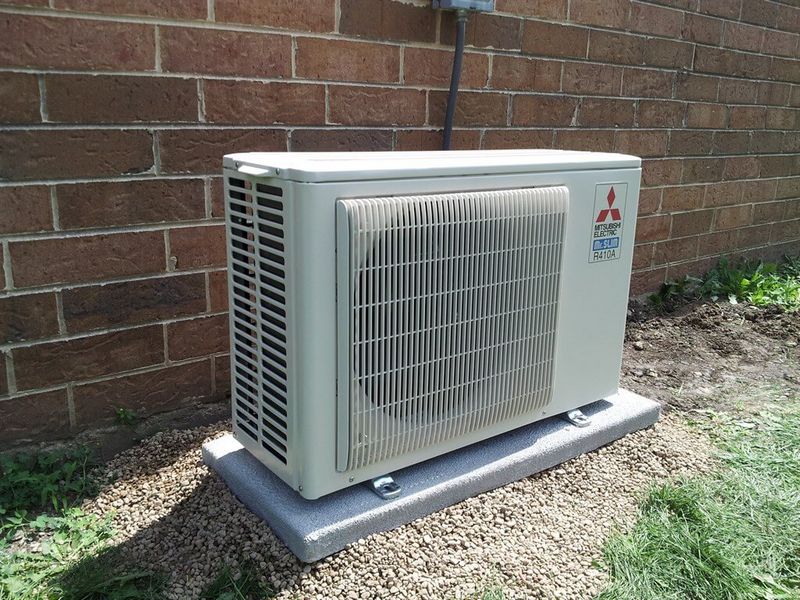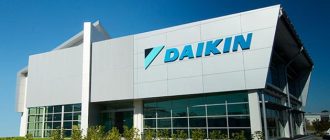
Why is split AC expensive?
Split air conditioners are known for their efficiency and effectiveness in cooling large spaces, making them a popular choice for both residential and commercial use. However, one major drawback of these units is their expensive price tag. There are several reasons why split air conditioners are costly compared to other types of air conditioners.
Firstly, the technology used in split air conditioners is more advanced and complex than in other types of AC units. A split air conditioner consists of two main components – an indoor unit and an outdoor unit. The indoor unit contains the evaporator and the fan, while the outdoor unit houses the compressor and the condenser. These two units are connected by refrigerant lines, which allow for the transfer of heat. The intricate design and installation of these components contribute to the higher cost of split air conditioners.
Another reason why split air conditioners are expensive is their energy efficiency. Split AC units are designed to consume less energy while providing the same cooling effect as traditional AC units. They are equipped with advanced features such as inverter technology, which allows the compressor to run at variable speeds, resulting in lower energy consumption. However, these energy-efficient features come at a higher price, which adds to the overall cost of split air conditioners.
Furthermore, split air conditioners are often considered a luxury item, which also contributes to their high price. The demand for split AC units is higher among consumers who prioritize comfort and convenience. Additionally, the installation process of split air conditioners requires professional expertise, which adds to the overall cost. These factors combined make split air conditioners a premium product that comes with a premium price tag.
In conclusion, split air conditioners are expensive due to their advanced technology, energy-efficient features, and the luxury status associated with them. While the high cost may deter some buyers, the benefits of split air conditioners, such as their efficiency and effectiveness, often outweigh the initial investment.
Reasons for the High Cost of Split Air Conditioners
Split air conditioners are known for their efficiency and effectiveness in cooling homes and offices. However, one of the drawbacks of these systems is their high cost. There are several reasons why split air conditioners tend to be more expensive compared to other types of air conditioning units.
Firstly, split air conditioners consist of two separate components: the indoor unit and the outdoor unit. This design allows for better cooling performance and quieter operation, but it also adds to the overall cost. Each unit requires its own set of components, including a compressor, fan, and refrigerant coils. Additionally, the installation process for split air conditioners is more complex and time-consuming, which adds to the overall cost.
Secondly, split air conditioners often come with advanced features and technologies that contribute to their higher price tag. These features may include inverter technology, which allows the system to vary the compressor speed and operate more efficiently, as well as smart controls that allow for remote operation and energy management. These advanced features require additional research and development, which drive up the cost of the units.
Thirdly, the demand for split air conditioners has been steadily increasing in recent years. As more consumers recognize the benefits of split systems, there has been a greater demand for these units in the market. This increased demand has led to higher production costs and a shortage of supply, which in turn drives up the prices of split air conditioners.
In conclusion, the high cost of split air conditioners can be attributed to the complex design and installation process, the inclusion of advanced features, and the growing demand for these units. While these factors contribute to the higher price tag, many consumers are willing to invest in split air conditioners due to their superior performance and energy efficiency.
Energy Efficiency and Performance
One of the main reasons why split air conditioners are more expensive compared to other types of air conditioning units is their energy efficiency and performance.
Split air conditioners are designed to be highly energy-efficient, meaning that they consume less energy to cool the same amount of space compared to other air conditioning units. This results in lower electricity bills and reduced environmental impact. However, the advanced technology and components required for this high level of energy efficiency contribute to the higher cost of split air conditioners.
Furthermore, split air conditioners offer superior performance compared to other types of air conditioning units. They provide more precise and consistent cooling, allowing users to set and maintain the desired temperature more accurately. The ability to cool specific zones or rooms individually also adds to the overall performance of split air conditioners.
Considering the energy-saving benefits and enhanced performance, it is understandable why split air conditioners come with a higher price tag. The initial investment in a split air conditioner is often justified by the long-term energy savings and improved comfort it provides.
Advanced Technology and Features
One of the main reasons why split air conditioners are expensive is because of their advanced technology and features. Split ACs are equipped with the latest technology and innovative features that enhance their performance and energy efficiency.
Compared to traditional window ACs, split ACs have advanced features such as inverter technology, which can adjust the compressor speed based on the cooling requirement. This results in significant energy savings and lower electricity bills over time.
Additionally, split ACs often come with advanced filtration systems, such as HEPA filters, that can remove dust, pollen, and other allergens from the air, providing a cleaner and healthier indoor environment. These features increase the overall cost of the AC unit.
Split ACs also offer other convenient features like remote control operation, sleep mode, timer functions, and auto restart. These additional features add to the overall cost of the AC unit but provide convenience and comfort to the users.
Therefore, the advanced technology and features of split air conditioners contribute to their higher cost compared to other types of ACs.
Installation and Maintenance Costs
One of the reasons why split air conditioners are more expensive compared to other types is the high installation and maintenance costs associated with them. Installing a split AC requires professional expertise and specialized tools, which adds to the overall cost. The installation process involves mounting the indoor and outdoor units, connecting refrigerant lines, and electrical wiring. These tasks can be complex and time-consuming, requiring the involvement of trained technicians.
In addition to the initial installation cost, the maintenance expenses of split ACs are also relatively high. Regular maintenance is essential to ensure optimal performance and longevity of the unit. This includes cleaning the filters, checking the refrigerant levels, and inspecting the overall condition of the system. Professional servicing is recommended to carry out these tasks, which incurs additional costs.
Furthermore, the availability of spare parts for split ACs can also contribute to their expensive maintenance. If any component malfunctions or breaks down, it may be necessary to replace it with a genuine spare part, which can be costly. Unlike window air conditioners, which have fewer components and simpler designs, split ACs consist of multiple units and intricate systems, making repairs more complicated and expensive.
In conclusion, the installation and maintenance costs of split air conditioners play a significant role in their overall expensive nature. These expenses are justified by the technical expertise required for installation, the ongoing maintenance needs, and the complexity of the system’s design. While the initial investment may be higher, the long-term benefits of split ACs, such as energy efficiency and superior cooling performance, make them a worthwhile choice despite the associated costs.
Customization and Design Options
One of the reasons why split air conditioners can be expensive is due to the customization and design options that are available.
Unlike window air conditioners, split AC units offer more flexibility in terms of installation and design. They can be installed in different rooms and locations within a building, providing individual temperature control and comfort. This requires additional features and components, such as outdoor and indoor units, refrigerant lines, and installation materials.
Moreover, split air conditioners come in various designs and styles to match different interior décors. This includes options for different colors, patterns, and finishes. These design options add to the overall cost of the air conditioner, as they require additional manufacturing processes and materials.
In addition to customization and design options, split air conditioners also come with advanced features and technologies. These may include energy-saving modes, smart controls, and advanced filtration systems. These features contribute to the higher cost of split AC units.
Overall, the customization and design options available in split air conditioners, along with the advanced features and technologies, contribute to their relatively higher cost compared to other types of air conditioners.
Brand Reputation and Quality
One of the main reasons why split air conditioners can be expensive is due to brand reputation and quality. Brand reputation plays a significant role in the price of an air conditioner. Well-established brands that have been in the market for a long time often have a higher price tag.
These brands have invested heavily in research and development, ensuring that their products are of superior quality. They have established a reputation for producing reliable and durable air conditioners, which makes consumers willing to pay a premium for their products.
Furthermore, well-known brands often have a wide network of authorized service centers and technicians, ensuring that customers have easy access to maintenance and repairs. This level of customer service and support also contributes to the higher cost of split air conditioners from reputable brands.
In contrast, lesser-known or generic brands may offer lower-priced air conditioners, but the quality and reliability may not be as high. These brands may cut corners in terms of design, materials, and manufacturing processes, which can result in a shorter lifespan and more frequent breakdowns.
When purchasing a split air conditioner, it is important to consider the brand reputation and quality. While it may be tempting to opt for a cheaper option, investing in a reputable brand can save money in the long run by ensuring a longer lifespan and fewer repair expenses.
Environmental Regulations and Standards
One of the reasons why the cost of split air conditioners is high is due to the environmental regulations and standards that manufacturers must adhere to.
These regulations and standards are put in place to protect the environment and ensure that air conditioners have a minimal impact on the planet.
Manufacturing a split AC unit that meets these regulations and standards requires additional steps and materials, which increases the overall cost of production.
For example, refrigerants used in split air conditioners must comply with regulations such as the Montreal Protocol, which aims to phase out substances that deplete the ozone layer.
Manufacturers must invest in research and development to find suitable alternative refrigerants that are environmentally friendly, and this research can be costly.
In addition, energy efficiency standards also contribute to the higher cost of split air conditioners. These standards require AC units to meet certain energy efficiency levels, meaning that manufacturers need to use more advanced technology and components, which can be more expensive.
Furthermore, manufacturers may need to conduct tests and obtain certifications to ensure that their products meet these standards. These additional steps and requirements add to the overall cost of production.
While these environmental regulations and standards are necessary for preserving the environment, they also contribute to the higher cost of split air conditioners.
Warranty and After-Sales Service
One of the reasons why split air conditioners are expensive is the warranty and after-sales service that comes with them. When you purchase a split AC, you are not only paying for the unit itself, but also for the peace of mind that comes with a warranty.
Split air conditioners are complex machines, and they require regular maintenance and service to keep them functioning at their best. The manufacturers of these units understand this, and that is why they offer warranties to cover any potential issues that may arise during the life of the AC.
A warranty typically covers the cost of any repairs or replacements that may be needed within a certain period of time. This can include parts, labor, and even the cost of a technician coming to your home to fix the AC. Having a warranty gives you the assurance that if something goes wrong, you won’t have to bear the full cost of repairing or replacing the unit yourself.
Additionally, the cost of after-sales service is factored into the price of a split AC. After-sales service includes things like regular maintenance, cleaning, and servicing of the unit. This ensures that the AC continues to work efficiently and effectively for years to come.
While having a warranty and after-sales service adds to the overall cost of a split AC, it is worth it for the peace of mind and the long-term benefits it provides. It not only protects your investment, but also ensures that you have a reliable and efficient air conditioning system in your home.
Demand and Supply in the Market
The reason why air conditioners (AC) are expensive is largely due to the demand and supply dynamics in the market.
There is a high demand for split air conditioners due to their energy efficiency and ability to cool specific areas. This high demand leads to increased production and availability of AC units in the market.
However, the supply of air conditioners is limited by factors such as manufacturing capacity and availability of raw materials. The production process of split air conditioners involves intricate technology and requires skilled labor, which further limits the supply in the market.
Additionally, the cost of raw materials and components used in the manufacturing of AC units can be high. The prices of materials like copper, aluminum, and refrigerants fluctuate based on supply and demand in the global market, which can impact the final price of air conditioners.
Moreover, the high demand for split air conditioners can lead to increased competition among manufacturers, further affecting the price. Manufacturers need to cover their production costs, marketing expenses, and generate profits, which can drive up the price of AC units.
In conclusion, the demand for split air conditioners and the limited supply of these units, combined with the cost of raw materials and competition among manufacturers, contribute to the high cost of AC units.
Raw Material and Manufacturing Costs
One of the main reasons why split AC is expensive is because of the high raw material and manufacturing costs involved in its production.
Split air conditioners require various components and materials to be manufactured. These include the compressor, condenser, evaporator, coils, fans, and other electronic components. The quality and durability of these components play a major role in determining the overall performance and lifespan of the AC unit.
The raw materials used in the production of split air conditioners, such as metals, plastics, and specialized components, can be expensive. The manufacturing processes required to assemble these materials into functional AC units also require substantial investments in machinery and skilled labor.
In addition, split air conditioners are often manufactured using advanced technologies and techniques, which further add to the production costs. These technologies include precision engineering, computer-controlled assembly, and quality control measures.
All these factors contribute to the high cost of split air conditioners compared to other types of cooling systems. However, it is important to note that the higher initial cost of a split AC is often offset by its energy efficiency and long-term savings in electricity bills.
| Compressor | Metal, specialized components | High |
| Condenser | Metal, specialized components | High |
| Evaporator | Metal, specialized components | High |
| Coils | Specialized materials | High |
| Fans | Plastics, metal | High |
Research and Development Expenses
One reason why split air conditioners (AC) are expensive is because of the high research and development (R&D) expenses associated with their production. Companies invest a significant amount of time and money in developing and improving the technology used in split AC systems.
R&D expenses cover various aspects of the product development process, including designing new models, testing them for efficiency and durability, and incorporating innovative features. These expenses also include conducting market research to understand consumer preferences and demands.
Split AC systems require continuous R&D efforts to stay competitive in the market. With advancements in technology, companies need to invest in R&D to improve the energy efficiency, noise level, and overall performance of the systems.
Moreover, R&D expenses are necessary to meet regulatory standards and certifications. Split ACs need to comply with safety, environmental, and energy efficiency regulations, which require additional testing, research, and development.
Overall, the high R&D expenses associated with split ACs contribute to their higher cost. These expenses are crucial for innovation, quality improvement, and compliance with standards, ensuring that customers receive a reliable and efficient cooling solution for their homes and offices.
Transportation and Logistics
One of the reasons why split air conditioners are expensive is because of transportation and logistics costs. Split AC units are large and heavy, which makes it more difficult and costly to transport them from the manufacturer to the retailer or customer’s location.
Transporting split AC units requires specialized equipment and expertise. The units need to be carefully loaded onto trucks or shipping containers and secured to prevent damage during transit. This requires additional manpower and resources, increasing the overall cost of transportation.
Furthermore, split AC units are often produced in different countries or regions and need to be transported long distances to reach their final destination. This entails additional logistical challenges, such as customs clearances, import/export fees, and coordination between multiple transportation providers.
The high transportation and logistics costs for split air conditioners are ultimately passed on to the consumer, contributing to the overall expensive price tag of these units.
| Transportation and Logistics |
| Reasons for the High Cost of Split Air Conditioners |
Taxes and Duties
One of the factors that contribute to the high cost of split air conditioners is the taxes and duties imposed on them. Governments often levy high taxes on these appliances, which further increases their price for consumers.
Due to the complex technology and energy-efficient features of split ACs, they are considered luxury items and are subject to higher taxes and duties compared to other types of air conditioners. The higher taxes are imposed to generate revenue for the government and to discourage excessive consumption, as split ACs consume more electricity compared to other cooling systems.
Furthermore, the import duties on split ACs can also significantly impact their cost. When split AC units are imported from other countries, they are subject to customs duties, which add to their already expensive price tag.
Overall, the combination of taxes and import duties makes split air conditioners more expensive for consumers. These additional costs contribute to the overall high price of split ACs in the market.
Inflation and Global Economic Factors
The high cost of split air conditioners can be attributed to several factors, one of which is inflation and global economic factors. Inflation is the general increase in prices over time, leading to a decrease in purchasing power. This means that the cost of manufacturing and distributing split ACs increases, resulting in higher prices for consumers.
Global economic factors also play a role in the expensive nature of split ACs. Fluctuations in exchange rates, trade policies, and political instability can all impact the cost of importing components and raw materials needed for manufacturing air conditioners. When these costs increase, manufacturers are forced to pass on the additional expenses to consumers.
Additionally, global supply and demand dynamics can affect the price of split ACs. If there is a high demand for these units but a limited supply, manufacturers may increase prices to maximize profits. Similarly, if the cost of production increases due to factors such as rising labor or energy costs, the final price of the ACs is likely to be higher.
It is important to recognize that the high cost of split air conditioners is not solely determined by inflation and global economic factors. Other factors such as brand reputation, technological advancements, and market competition also contribute to the overall price. However, it is clear that these economic factors play a significant role in the pricing of split ACs and contribute to their expensive nature.
Q&A:
Why are split air conditioners more expensive than other types?
Split air conditioners are generally more expensive than other types due to the dual-component design. Split air conditioners consist of an indoor unit and an outdoor unit, which increases the production cost and installation complexity.
Do split air conditioners offer any advantages over other types?
Yes, split air conditioners provide several advantages over other types. They offer greater cooling efficiency, quieter operation, and the ability to control the temperature of individual rooms or zones. Additionally, split air conditioners are often more aesthetically pleasing as the indoor unit can be mounted on a wall or ceiling.
What are some factors that contribute to the high cost of split air conditioners?
There are several factors that contribute to the high cost of split air conditioners. These include the cost of manufacturing two separate units (indoor and outdoor), the complexity of installation, the cost of refrigerant, and the technological advancements and features included in modern split air conditioner models.
Are there any ways to reduce the cost of split air conditioners?
While the cost of split air conditioners is generally higher compared to other types, there are some ways to potentially reduce the cost. These include purchasing during off-season periods when demand is lower, comparing prices from different manufacturers and retailers, and considering refurbished or discounted units. Additionally, some utility companies or government programs may offer rebates or incentives for purchasing energy-efficient air conditioners.




